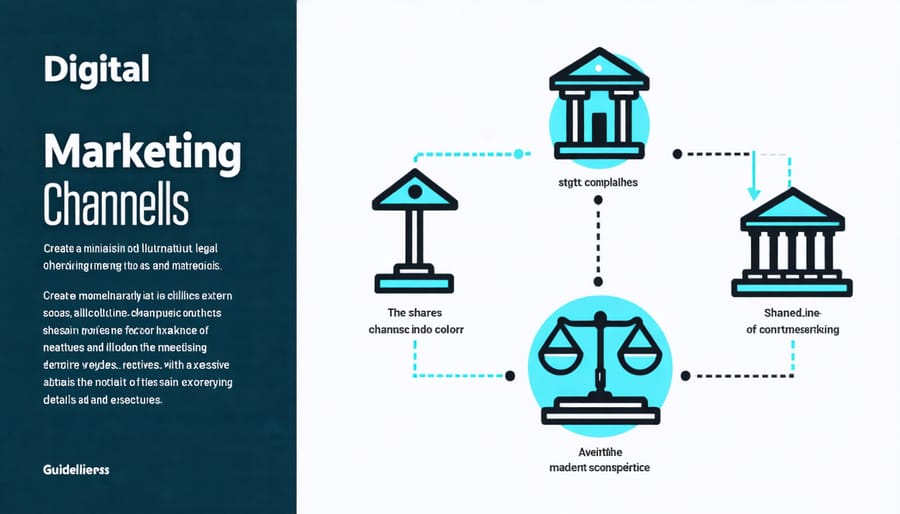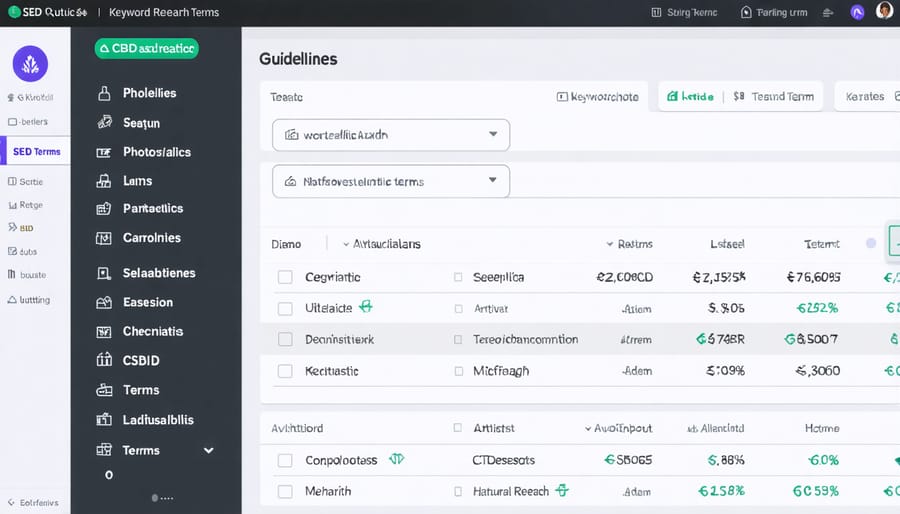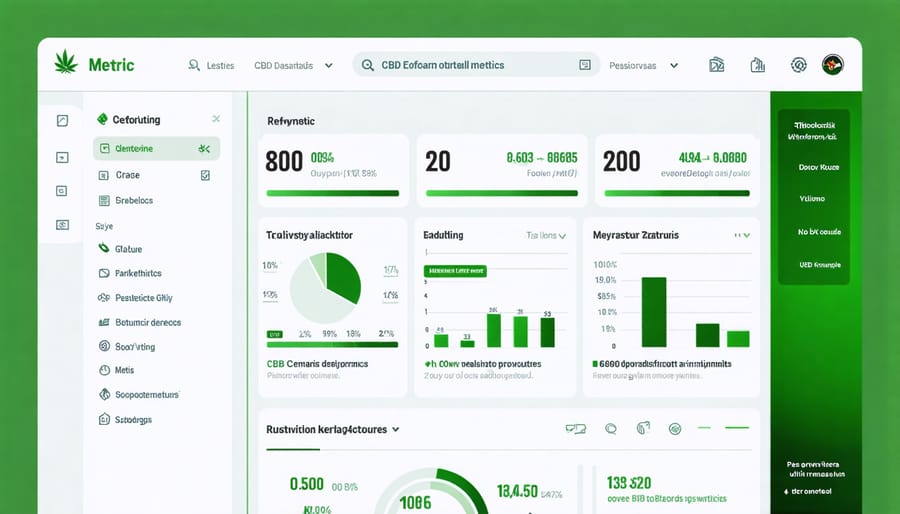Dominate the CBD oil market through proven search engine marketing strategies designed specifically for CBD oil canada and related products. Navigate complex advertising restrictions by leveraging high-intent organic keywords, creating educational content that addresses customer pain points, and building authority through verified customer testimonials. Implement structured data markup to enhance product visibility while staying compliant with local regulations.
Master compliance-focused SEO by developing comprehensive product guides, scientific research summaries, and user-centric content that naturally incorporates targeted keywords without triggering advertising filters. Focus on building backlinks from reputable health and wellness websites, medical professionals, and industry authorities to strengthen domain authority and marketplace credibility.
Optimize for local search by creating location-specific landing pages, maintaining consistent NAP citations, and leveraging Google Business Profile to capture geographically targeted traffic. Track performance through analytics that measure engagement metrics, conversion rates, and regulatory compliance simultaneously.
Navigating CBD Marketing Regulations

Current CBD Marketing Restrictions
Marketing CBD oil online comes with significant platform-specific restrictions that businesses must navigate carefully. Google Ads and Facebook maintain strict policies against promoting CBD products directly, even in locations where they’re legal. Facebook’s advertising platform prohibits the promotion of CBD and ingestible hemp, while allowing topical hemp products with careful messaging.
On social media, Instagram and Twitter allow CBD content but may shadow-ban accounts or restrict reach. Pinterest permits CBD content with limitations on health claims and direct selling. Email marketing platforms like MailChimp and Constant Contact often flag CBD-related content, requiring businesses to seek CBD-friendly alternatives.
To maintain compliance, avoid making medical claims, focus on educational content, and use approved terminology. Instead of “CBD oil,” consider alternative phrases like “hemp-derived wellness products” or “plant-based supplements.” Payment processors and e-commerce platforms also have varying policies, with some requiring pre-approval for CBD sellers.
Stay current with platform policies as they frequently change, and maintain documentation of compliance efforts to protect your marketing activities.
Compliance Best Practices
When marketing CBD oil online, compliance should be your top priority. Start by ensuring all product claims are factual and supported by reliable research. Avoid making medical claims or suggesting CBD can treat, cure, or prevent any diseases, as this violates FDA regulations.
Maintain transparency in your product descriptions by clearly stating CBD concentration, ingredients, and third-party lab testing results. Include appropriate disclaimers on your website and marketing materials, and regularly review your content against current regulations.
For advertising, familiarize yourself with platform-specific policies. Major platforms like Google and Facebook have strict guidelines regarding CBD promotion. Consider alternative marketing channels such as email marketing and content marketing, while ensuring compliance with CAN-SPAM Act requirements.
Keep detailed records of your marketing materials and regularly audit your website content. Work with legal experts familiar with CBD regulations to review your marketing strategy. Remember that regulations vary by state and country, so tailor your approach accordingly if targeting multiple regions.
Stay updated with industry compliance changes through reliable CBD trade associations and legal resources.
SEO Strategies That Work for CBD Businesses
Keyword Research for CBD Products
Effective keyword research for CBD products requires a strategic approach that balances search volume with competition levels while staying compliant with industry regulations. Start by identifying broad terms like “CBD oil” and “CBD products,” then expand into more specific long-tail keywords that target particular benefits or applications.
Use tools like Google Keyword Planner, SEMrush, or Ahrefs to identify keywords with moderate search volume and lower competition. Focus on terms that demonstrate commercial intent, such as “buy CBD oil online” or “best CBD oil for anxiety.” Include location-specific keywords if you’re targeting local markets.
Consider these high-performing keyword categories for CBD products:
– Product-specific terms (full-spectrum CBD, broad-spectrum CBD, CBD isolate)
– Usage-based keywords (CBD for sleep, CBD for pain relief)
– Quality indicators (organic CBD, lab-tested CBD)
– Product forms (CBD tinctures, CBD gummies, CBD topicals)
Analyze your competitors’ keyword strategies but avoid directly copying them. Instead, look for gaps in their coverage and target underserved niches. Remember to incorporate naturally flowing variations of your target keywords and maintain a balance between optimization and readability.
Track keyword performance regularly and adjust your strategy based on results. Pay special attention to conversion rates associated with different keyword groups to optimize your targeting over time.

Content Strategy Development
Developing a content strategy for CBD oil marketing requires a careful balance between providing valuable information and maintaining compliance with regulations. Start by conducting thorough keyword research focusing on informational terms like “benefits of CBD oil,” “how to use CBD oil,” and “CBD oil guides.” These terms typically face less scrutiny than direct promotional language.
Create educational content that addresses common customer questions and concerns. This can include blog posts about CBD oil extraction methods, detailed guides on reading CBD product labels, or articles explaining the endocannabinoid system. Remember to back all claims with credible scientific research and include appropriate disclaimers.
Diversify your content formats to capture different audience preferences. Incorporate infographics explaining CBD oil components, video content showing proper usage guidelines, and expert interviews discussing industry trends. User-generated content, such as customer success stories, can add authenticity while staying within compliance boundaries.
Implement a consistent publishing schedule and maintain a content calendar that aligns with industry events and seasonal trends. Focus on long-form, comprehensive content that thoroughly covers topics rather than multiple shorter pieces. This approach typically performs better in search rankings and establishes your authority in the CBD space.
Always have your content reviewed by legal experts familiar with CBD regulations to ensure compliance while maintaining SEO effectiveness. Regular content audits help identify and update underperforming pieces while ensuring all material remains current with evolving industry standards.
Technical SEO Considerations
A solid technical foundation is crucial for CBD websites to succeed in search rankings. Start by implementing essential website optimization strategies specific to CBD sites. Ensure your site has a secure HTTPS connection and mobile-responsive design, as these are non-negotiable ranking factors.
Pay special attention to website speed optimization, as slow-loading pages can significantly impact both rankings and user experience. Compress images, leverage browser caching, and minimize code to improve load times.
Implement proper schema markup for your CBD products, including product prices, availability, and reviews. This helps search engines better understand your content and can lead to enhanced search results with rich snippets.
Create a clear site architecture with logical URL structures and internal linking. Consider organizing products by categories like “Full Spectrum CBD,” “CBD Isolate,” and “Topical CBD Products” to help users and search engines navigate your site effectively.
Set up proper canonical tags to prevent duplicate content issues, especially if you’re selling similar CBD products with different strengths or sizes. Additionally, implement hreflang tags if you’re targeting multiple regions with different regulatory requirements.
Finally, ensure your robots.txt file is properly configured to allow search engines to crawl and index your content while blocking sensitive areas of your site.
Alternative Marketing Channels
Email Marketing for CBD
Email marketing remains one of the most effective channels for CBD businesses, offering a direct line of communication with interested customers while bypassing many platform restrictions. Start by creating compelling lead magnets such as CBD guides, wellness tips, or exclusive discounts to encourage sign-ups.
When building your email list, focus on quality over quantity. Implement double opt-in procedures to ensure compliance and maintain list hygiene. Segment your subscribers based on their interests, purchase history, and engagement levels to deliver more targeted content.
Your email content should balance educational material with promotional messages. Consider a mix of:
– Industry news and CBD research updates
– Product spotlights and usage guides
– Customer success stories and testimonials
– Exclusive offers and early access to new products
To maintain engagement, stick to a consistent sending schedule while avoiding spam triggers in your subject lines and content. Be particularly mindful of compliance – avoid making medical claims and include necessary disclaimers in your emails.
Track key metrics like open rates, click-through rates, and conversion rates to optimize your campaigns. A/B test different elements such as subject lines, send times, and content formats to improve performance.
Remember to regularly clean your list by removing inactive subscribers and updating preferences to maintain high deliverability rates and engagement levels.
Content Marketing Opportunities
Content marketing presents a unique opportunity to educate consumers about CBD oil while building brand authority. Start by creating informative blog posts that address common questions and concerns about CBD products, focusing on topics like benefits, usage guidelines, and quality indicators. These posts should incorporate relevant keywords naturally while providing genuine value to readers.
Podcasting offers another powerful channel to reach your audience. Consider launching a CBD wellness podcast or appearing as a guest on established shows in the health and wellness space. This helps build credibility while reaching new audiences who prefer audio content.
Educational content should form the backbone of your content strategy. Develop comprehensive guides, infographics, and video tutorials that explain complex CBD-related topics in simple terms. When you optimize Google My Business listings with regular content updates, you can showcase these educational materials to local audiences.
User-generated content, such as customer testimonials and success stories, adds authenticity to your marketing efforts. Encourage satisfied customers to share their experiences through reviews and social media. This not only provides fresh content but also builds trust with potential customers.
Remember to maintain consistency in your content calendar and always verify that your content adheres to current CBD marketing regulations. Focus on education rather than making medical claims, and regularly update your content to reflect the latest industry developments and research.
Measuring Success and Optimization

Key Performance Indicators
Tracking the right metrics is crucial for measuring the success of your CBD oil SEO marketing efforts. Focus on these key performance indicators to gauge your campaign’s effectiveness and make data-driven improvements.
Organic traffic growth should be your primary metric, specifically monitoring increases in CBD-related search visibility. Track monthly users, session duration, and pages per visit to understand how effectively you’re engaging potential customers.
Conversion rate optimization is particularly important in the CBD industry. Monitor your e-commerce conversion rate, average order value, and cart abandonment rates. For CBD businesses, typical conversion rates range from 1-3%, though this can vary based on market conditions and targeting.
Keep a close eye on your keyword rankings, especially for high-intent terms like “buy CBD oil” or location-specific searches. Track both branded and non-branded keyword performance to assess overall market presence.
Backlink quality and quantity are crucial metrics, given the CBD industry’s strict advertising limitations. Monitor domain authority of referring sites, focusing on health, wellness, and legitimate CBD-related domains.
User engagement metrics such as bounce rate, time on page, and social shares provide insights into content effectiveness. For CBD content, aim for bounce rates below 60% and average session durations above 2 minutes.
Finally, track your local SEO performance through Google Business Profile insights, including local pack rankings and click-through rates for “CBD near me” searches.
Optimization Strategies
To maximize your CBD oil SEO efforts, focus on implementing data-driven optimization strategies that consistently improve campaign performance. Start by conducting regular keyword research to identify emerging trends and long-tail opportunities in the CBD market. Monitor your competitors’ rankings and adjust your content strategy accordingly.
Implement A/B testing for your product pages, testing different elements like meta descriptions, headlines, and calls-to-action. Track conversion rates and user behavior to identify what resonates best with your audience. Use heat mapping tools to understand how visitors interact with your content and optimize page layouts accordingly.
Pay special attention to your site’s technical SEO elements. Ensure fast loading times, mobile responsiveness, and proper schema markup for CBD products. Regular site audits can help identify and fix crawl errors, broken links, and other technical issues that may impact rankings.
Focus on user engagement metrics by creating interactive content like CBD dosage calculators or product selectors. These tools not only provide value to users but also increase time on site and reduce bounce rates – both positive signals to search engines.
Finally, establish a regular content update schedule. Fresh, relevant content helps maintain search engine visibility while keeping your audience engaged. Monitor your analytics regularly and adjust your strategy based on performance data to ensure continuous improvement in your SEO efforts.
Implementing effective SEO strategies for CBD oil marketing requires a balanced approach combining technical optimization, quality content creation, and regulatory compliance. By focusing on educational content, leveraging long-tail keywords, and building authoritative backlinks, you can establish a strong online presence while adhering to industry guidelines. Start by auditing your current SEO efforts, then implement these strategies incrementally, measuring results along the way. Remember to stay updated on industry regulations and adjust your approach as needed. With consistent effort and strategic planning, you can improve your CBD oil business’s visibility and attract qualified leads while maintaining compliance with search engine and advertising policies. Take action today by implementing one strategy at a time, and continue optimizing based on performance data.
